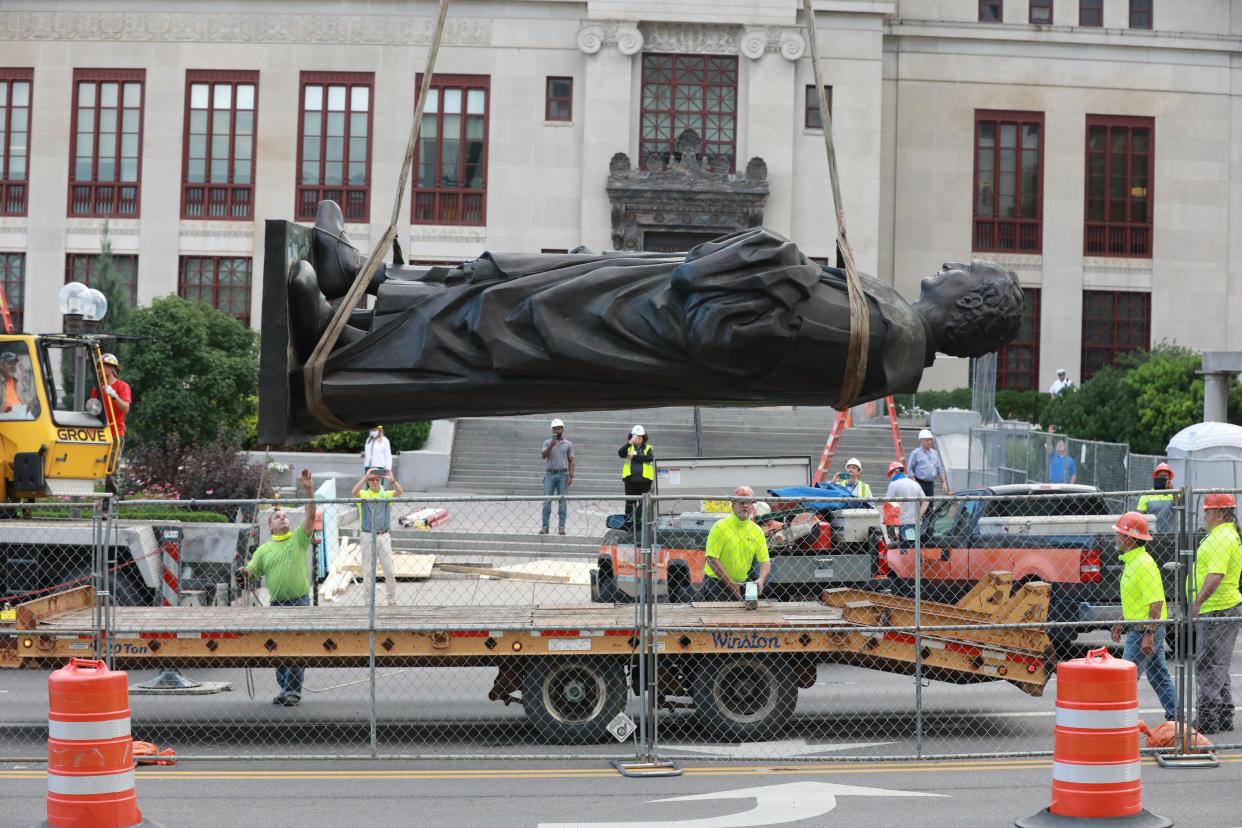Instead of Christopher Columbus, let's honor our waterworks that changed the world: Blundo

So, our town is about to take up the problem of what should replace the giant Christopher Columbus statue at City Hall.
When last we saw the bronze icon, it was 2020 and he was lying face-up in the bed of a truck, a deposed titan on his way to exile for 500-year-old human rights violations.
Now, the city is about to embark on a process to select less problematic works of public art for City Hall — and figure out a new and no doubt less prominent home for the Columbus statue. (See reimaginingcolumbus.com for the details.)
Blundo: Annual backpack drive aims to prepare 11,400 kids for school
My first thought on the City Hall art question was, for heaven’s sake just plant a tree. It’ll sequester carbon, shade pedestrians and spare us the endless acrimony that always encompasses public art endeavors. Not even Tucker Carlson could be enraged by a tree.
But I’m pretty sure a tree would be found somewhat lacking in grandeur. So now I’m thinking water. Why? Because without a doubt, our city’s most important contribution to the world was demonstrating how to install a public water system that wouldn’t kill people.
Before we figured that out in the early 1900s, Columbus’ contaminated water was knocking off citizens young and old at an alarming rate. (Similar problems plagued other growing cities that struggled with how to handle sewage.) The best-known victim of our water was a U.S. senator — Marcus Hanna, of Ohio — who died of typhoid fever presumably contracted on a visit here in 1904.
At one point, the contamination problem got so bad that clean water was shipped to Columbus schools in used whiskey barrels. It kept the kids healthy but made them smell like they’d just been to happy hour.
Such tragedies and embarrassments were the motivators for Columbus to construct, by 1908, sophisticated water and wastewater treatment systems that were hailed around the world. The technology already existed, but Columbus was the first to employ it on such a large scale.
A mayor of Moscow (the one in Russia) on a visit here in the early 20th century told an audience, “We’ve never heard of Columbus, but we’ve heard of your waterworks.”
Much of what I know about our water history comes from “The Great Columbus Experiment of 1908,” a 2012 book by historian and architect Conrade Hinds, who worked for the City of Columbus Department of Public Utilities, calls the experiment the “moon landing of its day."
Blundo: Despite sloganeering for decades, here's why Columbus doesn't have an identity: Blundo
In my mind, the Columbus Experiment outranks all other achievements — even the first gorilla born in captivity, the butter cow and the occasional college football championship — in city history.
So, I say when considering what kind of statement we want to make at City Hall, think water: Fountains, falls, flumes. And when visitors ask what’s with all the aquatic features, we’ll have a healthy story to tell them.
Joe Blundo is a Dispatch columnist.
@joeblundo
This article originally appeared on The Columbus Dispatch: Instead of Christopher Columbus, let's honor our waterworks: Blundo

